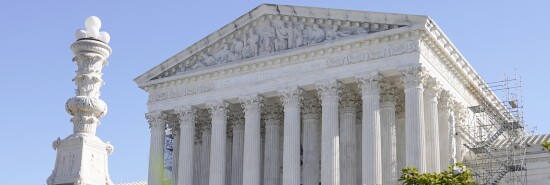
Supreme Court’s new ethics code won’t stifle cynical leftist attacks
Washington Examiner
Video Embed
Now that a unanimous Supreme Court has issued a formal code of conduct for itself, its leftist critics should stop jawboning against the bench as though it were a haven for corruption.
The Left’s instantaneous complaint that the code, released on Nov. 13, lacks “enforcement mechanisms” is a cynical ploy they would drop the moment the Left retook a high court majority. Its smears against originalist and textualist judges before the adoption of the code stemmed entirely from political motives rather than sincere concerns about ethics.
LIBERAL GROUPS DISENCHANTED WITH NEW SUPREME COURT ETHICS CODE
The substance of the new code is unremarkable but entirely sensible. It adopts most of the code that already applies to lower court federal judges. The only noteworthy difference is a small one on the treatment of recusals. Some circumstances necessitate recusal, but potential conflict is not always obvious. There are gray areas. The code says Supreme Court justices should feel less obligated than lower court judges to withdraw from hearing particular cases.
This makes sense. The thoughtful commentary that accompanies the new code notes that “lower courts can freely substitute one district or circuit judge for another,” but the Supreme Court only has nine justices, without any substitutes. A single recusal stacks the deck against petitioners because whether eight or nine justices hear a case, five votes are needed to overturn the lower court ruling.
“The absence of one Justice,” the commentary explains, “risks the affirmance of a lower court decision by an evenly divided court — potentially preventing the court from providing a uniform national rule of decision on an important issue.”
Unless a justice’s conflict of interest is stark, “the time-honored rule of necessity” prevails. In other words, the need for a final arbiter is paramount. Justices who survive the confirmation gantlet must be accorded a basic presumption of propriety, as the Constitution affords them authority independent of the other two branches of government.
That latter consideration explains why the Left’s calls for “enforcement mechanisms” are so misguided or malicious. The Constitution puts the “Supreme” in the high court’s title for good reason: There is no good way that inferior court officials can be allowed to judge the nation’s final judicial arbiters. Except in extreme circumstances, the “separation of powers” means that justices should be immune from political motivations to which elected branches of government respond.
Any independent “enforcement mechanism” with teeth would play into the hands of those who want to attack individual justices for political reasons rather than for legitimate ethical concerns. That’s why even a senior fellow of the liberal Brookings Institution, the highly credentialed Russell Wheeler, wrote that the lack of major enforcement teeth is “a necessary imperfection,” and that almost every proposal to fix it “would likely create more problems than they would solve.”
There might be a case at the margins for better reporting mechanisms or more transparency of justices’ affairs, but there is none for demands for the independent punishment of justices. These, if they existed, would be used to harass justices over ideological disagreements. As usual, the Left is seeking power or chaos, not real reform.
CLICK HERE TO READ MORE FROM THE WASHINGTON EXAMINER
The Constitution provides power to penalize corrupt judges and justices the same way corrupt presidents can be penalized. It’s called “impeachment.” Congress through the years has used impeachment to remove eight federal judges from the bench, including one just 13 years ago. The process already works when needed.
The new code of conduct clarifies justices’ responsibilities. This protects them and the court from the danger of straying unwittingly into conduct for which they might be impeached. This is a good development. Anything more would serve nakedly political efforts to sabotage the constitutional order.
